World of Tanks news » The Chieftain's Hatch: The Patton Museum

November 11th, amongst other more important things, also happens to be the birth day of General George S. Patton Jr. The museum which bears his name is to be found at Fort Knox. Synonymous for years with one of the US’s premier armor musea, the focus has shifted. The synonymity between the armor and the Patton Museum was perhaps somewhat misleading: There always were two different musea, the Armor museum and the Patton Museum, but this only became really noticeable when the Armor collection went to Fort Benning. The Patton Museum is now the Patton Museum of Leadership.
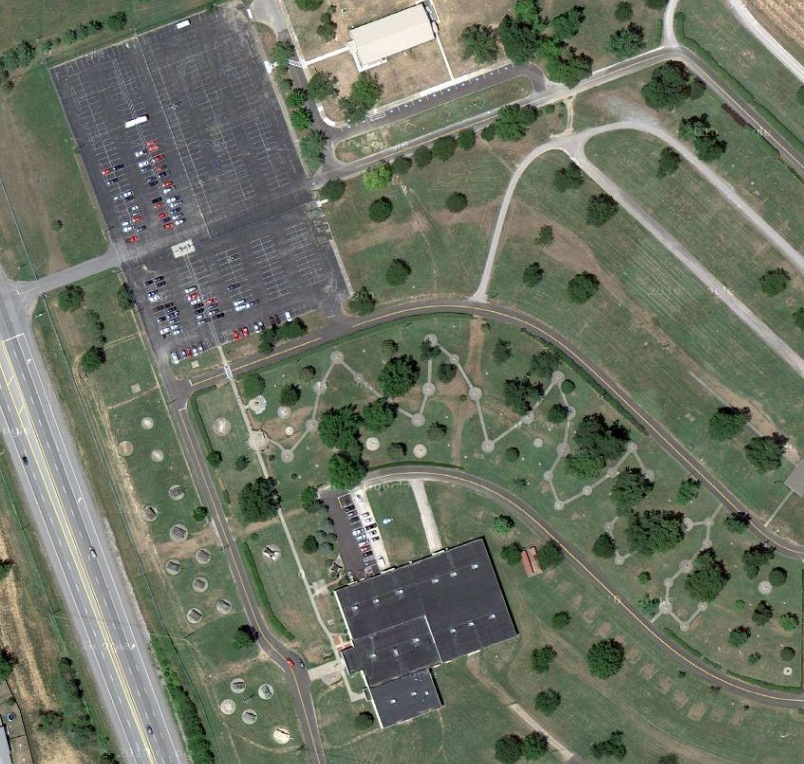
Due to the fact that there isn’t very much on display there right now as the museum is in a state of construction, instead of my usual ‘Museum Review’ I decided, since I was there, to interview the Director of the museum, Mr Christopher L. Kolakowski, and get the background scoop of the changes going on behind the curtains and to see what the future holds for the museum.
Mr Kolakowski has held the position for two years. Prior he was the Chief Curator of the Army Museum of the Army Reserve, currently in Fort Bragg. The opportunity to almost create a museum from scratch was, as he put it, “an offer I couldn’t refuse.” He has an undergraduate degree in history and a graduate degree in public history, his second book on the Civil War came out last month.
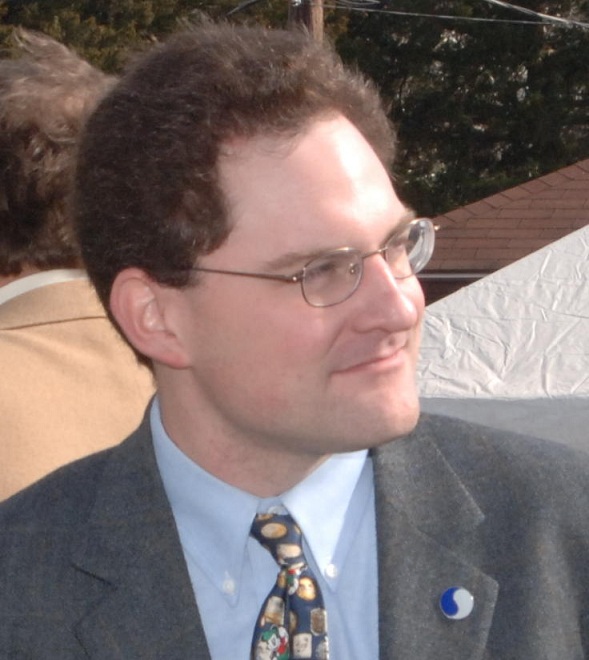
One of my first questions was “How can one have a museum of leadership? Leadership is a concept, but when one thinks ‘Museum,’ one thinks of a place where one wanders around and looks at physical artifacts.”
He’s obviously ready for this one: “We’re going to use objects to tell stories. It won’t just be ‘walk through and look at the cool stuff’, but ‘here’s the cool stuff, and here’s the story associated with it.’ For example, the only Medal of Honor recipient buried in Ft Knox is MSG Ernest Kouma who earned his award in an ‘Easy Eight’ such as the one parked out front. What we want to do is bring it in and display it ‘on the Pusan Perimeter’ and put it in context to teach the story of Ernest Kouma and his leadership and valour under fire”
So what is the timeframe? “The Armor Museum shut its doors 06 September 2010, the Patton Museum of Leadership raised the flag the next day. The museum was closed for 90 days at the beginning of this year, to renovate the front. The 45,000sqft building is being renovated in stages. The renovation has added a new roof, notification system, décor… basically added another 20 years of life to the building and proved us a blank canvas, if you will, to work from. One of the best assets we have is this building and a lot of space. We have 33,000sqft of display space, but in comparison, the National WWII Museum in New Orleans has 16,000sqft of display space. We have a lot of room.”
“Where does the funding come from?”
“Primarily from the Army. My staff and I are Army employees but there is also an associated non-profit foundation. The big price tag we have right now are the large exhibits, about a $5,000,000 price tag. We have inherited a lot of the volunteers from the old Armor museum, they’re doing a lot of work for us. We’re doing a restoration of the Patton command van, for example, we want to take it back to its 1944 look, the volunteers are a real asset to us. We’re looking at Summer 2014 as the target date to be fully re-opened, but even now if people come to visit, they can see the Patton Collection and get a taste of where we’re going.”
“What’s the age target for the museum? Are you looking to keep 12-year-olds interested, or just 18-and-up?” “Broad spectrum. Yes, we have a soldier training mission, but we have a public outreach and public education mission as well. Only 1% of the country interacts with the military on a daily basis, and only 10% are veterans. Anything we can do to increase the awareness is a good thing”
So, I decided to ask a more controversial question. “Why the ‘Patton’ Museum of Leadership? The Army FM defines leadership as influencing others, and he certainly had that effect but could one not argue that Patton’s style is out-dated and belongs in a museum?”
“I will argue it, and here’s why. Yes, the Army Field Manual defines leadership that way, but it defines it further as having six characteristics. Three that an Army Leader has, and three that he does. Patton exemplifies that. The other thing we want to show in the museum is that leadership makes a difference, both in a positive and negative sense. If you want to bring future officers through here and teach leadership, Patton is very instructive, both in a highly positive sense, and also some instructive negatives, such as the slapping incidents in Sicily. “
Who visits?
“ROTC’s parent command, US Army Cadet Command moved here this summer. So we are working to get into the program of instruction. Both for training their instructors, but also the Cadets themselves. During the Summer we get a class of cadets come through once every three days if not more often.”
There have been 68,000 visitors in the last fiscal year, about 2/3 of the year before, which isn’t bad considering the place was closed for three months. One of the most common questions is, of course, “Where are the tanks”, and maybe 10% of visitors were unaware that the tanks were gone.
“How did they decide which vehicles to leave behind?” asked I. “They left us duplicates of what they already had. They still have their core focus of training Armor soldiers, so only the tanks they could afford to leave behind stayed”

“One of the things I greatly believe in is that a museum should be a living entity, that every time you come back, there’s something new. Also, by way of archives, we have a good, high quality archive to include the complete Patton collection, the 100th Divisions’ archives, and those of other Army leaders”
So, after that, we moved from the office to see the museum itself.
“The ‘Grand Entrance’ is going to be the ‘introduction to the concept of the museum’, kindof like the Infantry Museum’s ‘Last 100 yards’. On the walls, we’re going to have silhouettes of leaders such as Washington crossing the Delaware, and leadership quotes above them.”

A thought struck me.
“Are you focusing purely on American leaders? ”
“Yes. One of our focuses is to train US Army officers so our focus is primarily US Leadership.”
“That seems a little limiting, no? For example Bernard Montgomery had some good leadership quotes well worthy of passing on to leaders of the future”
“If you read the chapter on leadership and command in Monty’s memoirs, it’s a fantastic treatise on leadership, and there are some places like in the WWII section where we’re probably going to put Monty in there, but we’re going to try to keep it to US as best we can.”
We continue, stopping at a picture of Patton (in a hard-hat) and his plan of the future of the museum.
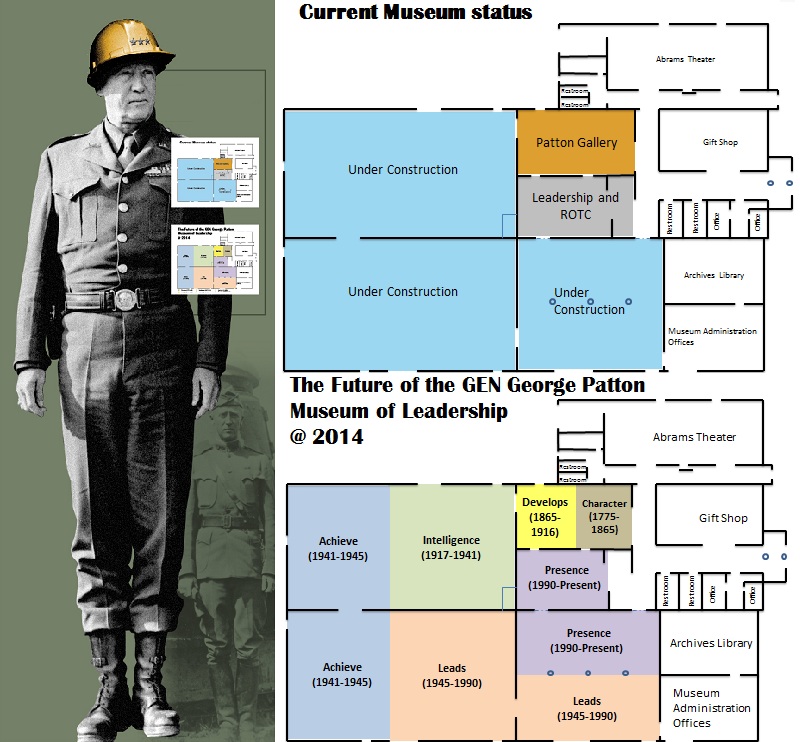
“So this is where we want to go,” says Mr Kolakowski, pointing at the plan. “Start at 1775, loop through (counterclockwise) and end up here. One of the things we want to do, for example, is a “Vietnam Jungle Walk”, we want to be able to immerse people into it, have a walk-through trench for WWI, we want to take the command van and do a ‘leader in the field’ to explain how Patton lived and worked day to day in the field, you get the idea”
As we walk, I ask the odd question. “Has the concept of leadership changed in doctrine from WWII to today?” “It has,” but we get to the next exhibit and he goes back on topic.
“This part of the museum talks about the commands that arrived, such at 100th Div from Louisville. One of the things we’re going to have here is an interactive exhibit on the Army Recruiting Command, to include the Kitchener poster next to the Uncle Sam poster which is a direct plagiariasation. You can look at old recruiting posters, watch old commercials on the interactive screen, that sort of thing”
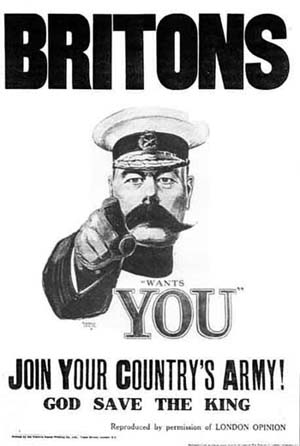
Then the ROTC section, most of the exhibits shipped in from Ft Monroe when it closed last year.
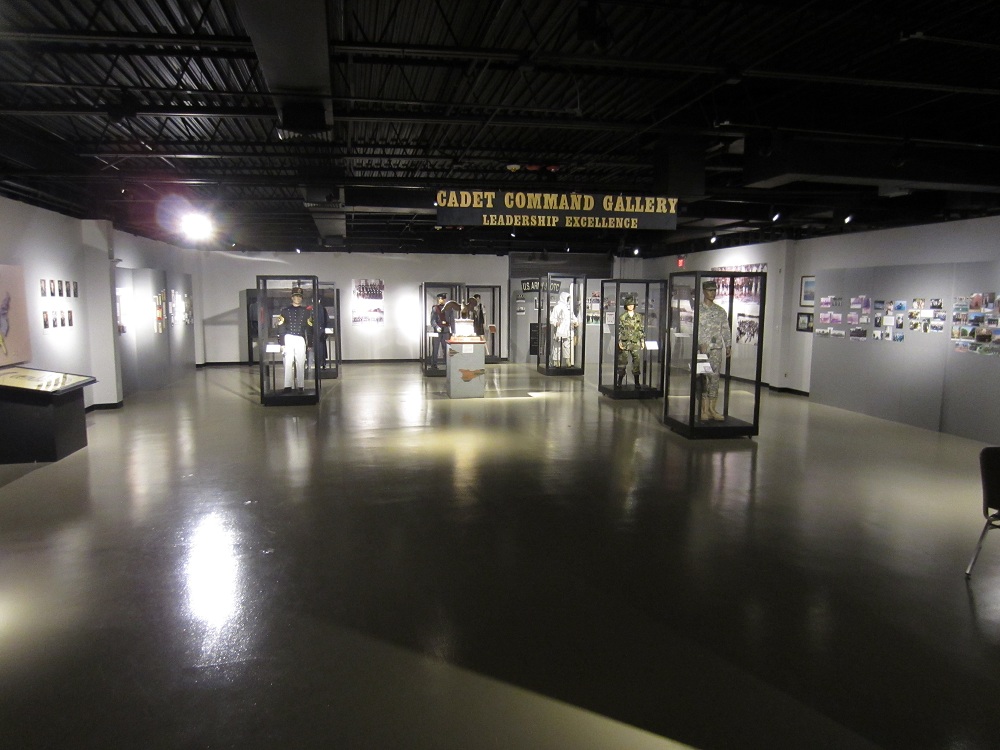
“This wall, when we have cadets, we show them this… I’ll put you on the spot here: What are the four ways the Army gets its officers?”
“OCS, Direct Commission. West Point, ROTC”
“Very good! Actually most military officers don’t get that. What source gives the greatest number of officers each year?”
“ROTC, easily”
“Yes. 60%. OCS is second, West Point is third, and a small percentage Direct Commission. One of the other things is that one of the top four jobs in the Army, Chairman of the Joint Chiefs, Chief, Vice Chair and Vice Chief have been held by an ROTC graduate every year since Colin Powell became chairman in 1989, except for 1996. Before that you could count on one hand the number of ROTC graduates who were Chief or Chairman of the Joint Chiefs. That’s to demonstrate how important ROTC is to the Army today. Anyway, as we go around, the exhibits will explain why ROTC is important to the Army.”
There's also a section on JROTC, though it's hard to imagine ever taking this uniform seriously.
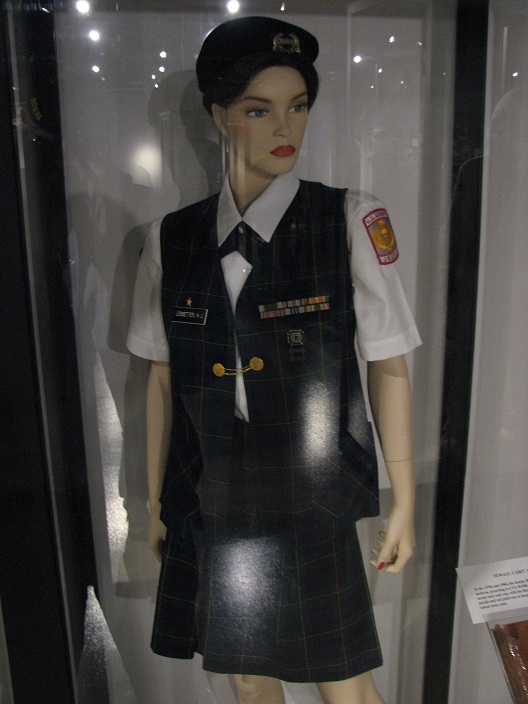
So, we get to the Leader Wall, with the six characteristics. “Most of these stories will end up on the floor as bigger exhibits as well, the idea is to ‘get people thinking’ about the characteristics. The time frame varies from the Revolution to Iraq. On the other side, we’re taking battles, taking a senior leader, commissioned leader, and enlisted leader (or unit) and plotting them on the battlefield, and show who they are and what they did.”
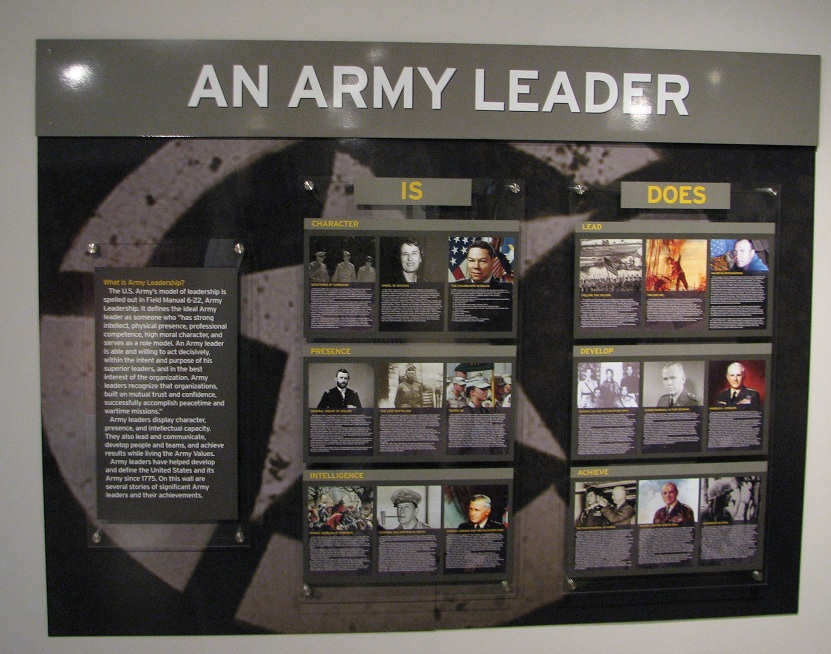
One of the battles on the wall was Desert Storm, to which I voiced the opinion, perhaps foolishly, that the victory there seemed to me not so much due to leadership as it was due to training. The response was that the fact that leadership in garrison, training, unit cohesion, all of that sweat… If you do all that, then you’re going to ‘make it happen’ in the fight. “But the discussion which we just had was exactly the point of the wall, it got you thinking about leadership. Those are the types of exchanges we want to foster here. How can good or bad leadership affect performance on the battlefield.”
So we move to the Patton Gallery
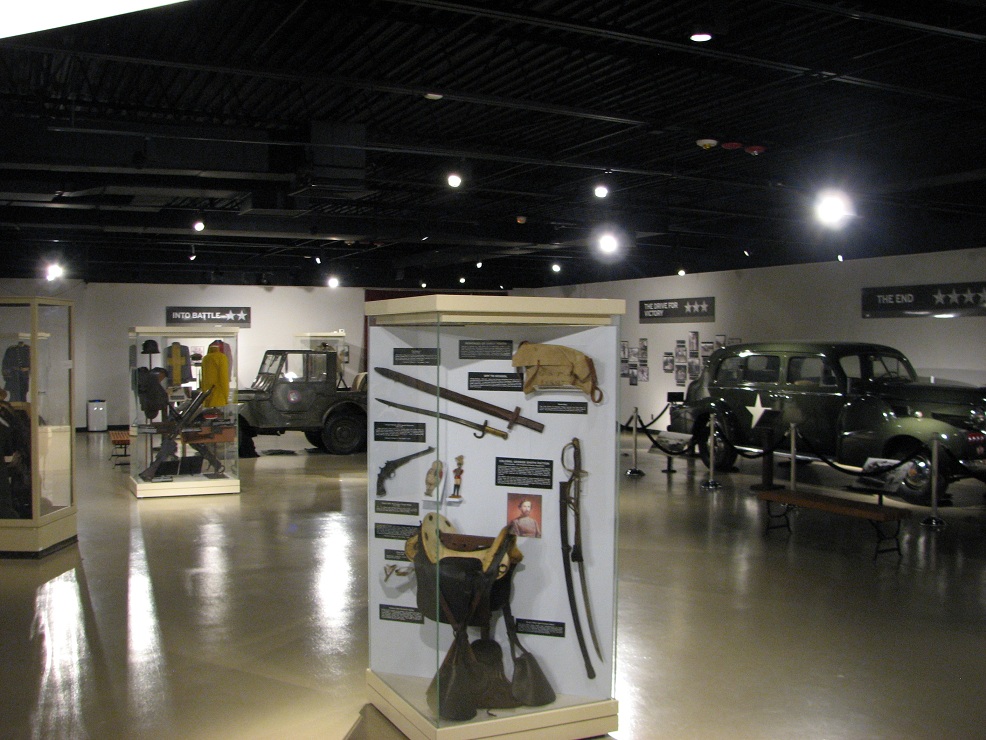
“We’ve taken a few things off, added a few things. The biggest addition is the Julio Cardenas saddle which hasn’t been on display in twenty years. The Green Hornet, however, has been removed. It was fading dramatically and is going to undergo restoration. “ The response to “can you get it back to green?” was “I don’t know, but we’re going to try. Light damage is notoriously difficult to reverse.”
Move to a photo of Patton in a commanding pose wearing his ‘iconic’ leather jacket, ivory-handled pistols, and helmet.
“I use this photograph and I use this jacket” he gestures to a jacket in a display, “to talk about non-verbal communication. Now, you’re an experienced officer, you understand this. For cadets, this is rocket science: Your appearance, your body language is sending messages. In the case of Patton his distinctive look and uniform items, people always could find him on the battlefield.”
“Well, hang on, he was a stickler for uniformity, soldiers dressing to standards, and goes and wears non-standard sidearms and designs his own uniforms. Some would argue that’s ‘Do as I say, not do as I do.’”
“True, however, the regulations did allow Generals more leeway than other ranks, which is still true today, even though you don’t much see it.”
And so we moved to the last gallery. Something this museum has not done before is talk about Ft Knox history. There is a timeline from 1918 to today.  Some WWII artefacts, photos, and even a model of the Gold Depository used in Goldfinger. In front of the portrait of Henry Knox, he points out that the post was originally proposed to be the Home of Artillery, before circumstances changed and Artillery never left Ft Sill. Then, Home of Armor, and now, Leadership. The base has changed before, and will again.
Some WWII artefacts, photos, and even a model of the Gold Depository used in Goldfinger. In front of the portrait of Henry Knox, he points out that the post was originally proposed to be the Home of Artillery, before circumstances changed and Artillery never left Ft Sill. Then, Home of Armor, and now, Leadership. The base has changed before, and will again.
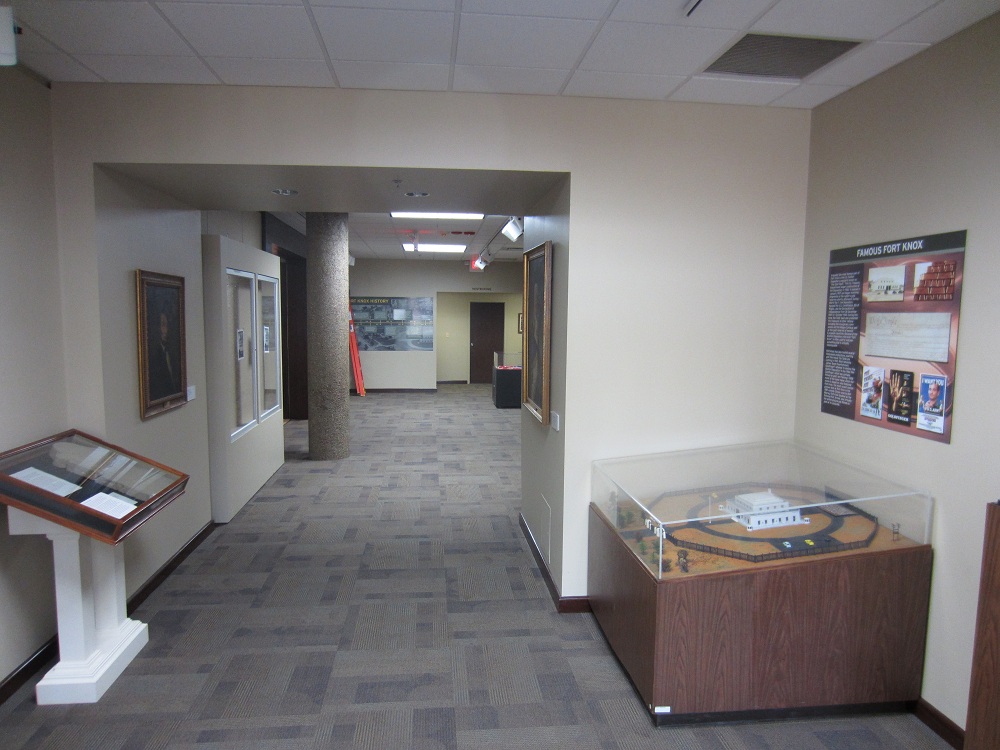
“So that’s what we have now. It’s a taste of what’s coming. One of the messages I want to send to your readers is ‘stay tuned.’ We’re not where we want to be, but we’re getting there, and there’s going to be a lot more exciting stuff at the Patton Museum”















 Update comments
Update comments